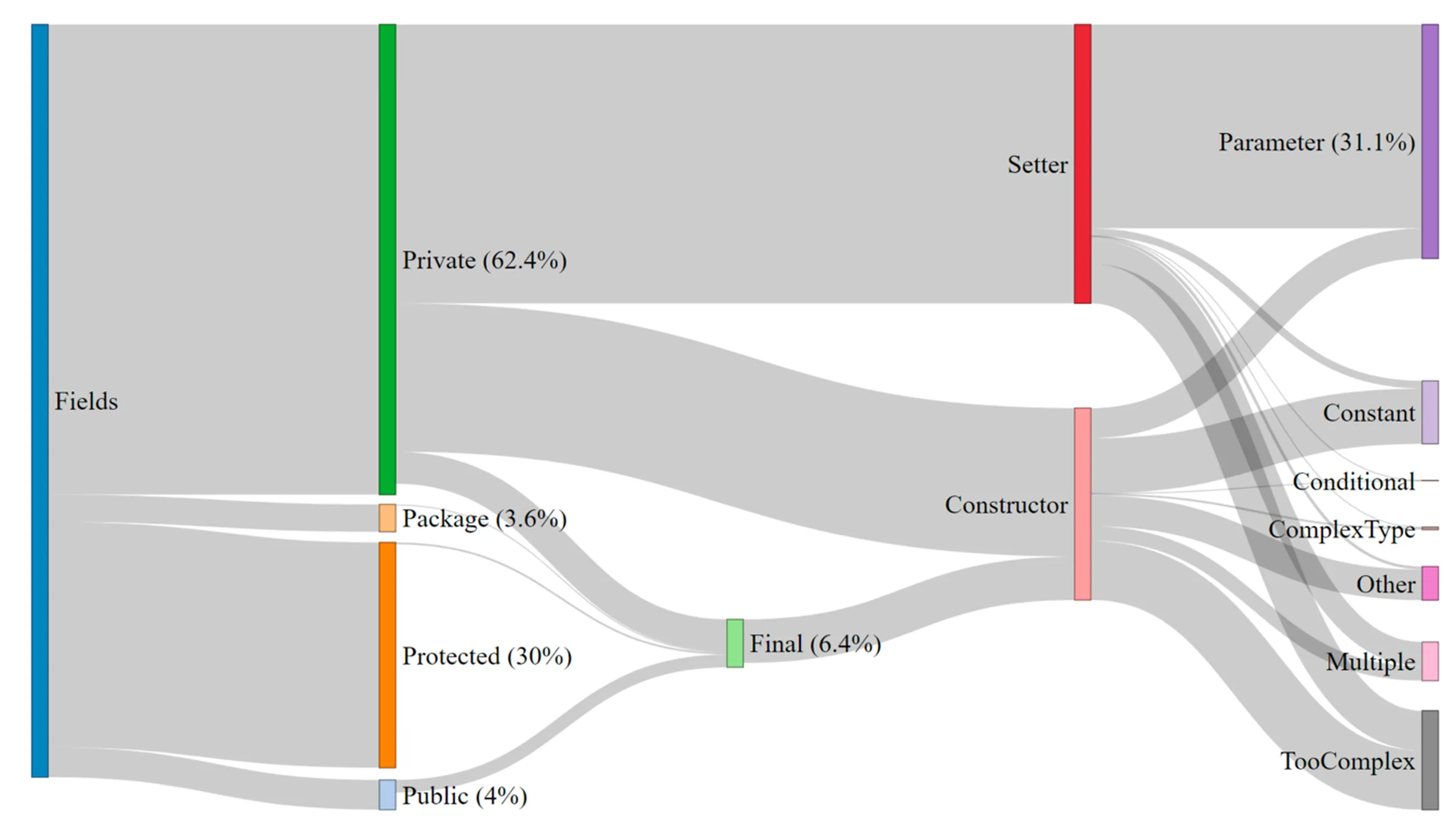How Easily Can We Set Object States for Unit Testing?
Automated test case generation plays a crucial role in software testing, but effectively setting the internal state of objects remains a challenge. This blog explores an empirical study analyzing 110 open-source Java projects to determine how easily object fields can be initialized for testing. The findings reveal that while 66.5% of fields can be directly set to a desired value, 31.5% require further analysis, and 2% remain unmodifiable. Understanding these limitations is essential for improving automated test generation and ensuring realistic test cases.
How Easily Can We Set Object States for Unit Testing?
Automated test generation has significantly advanced software quality, but one persistent challenge remains: setting the internal state of objects in a way that mimics real-world usage. Traditional approaches often rely on reflection, allowing test frameworks to manipulate fields directly. However, this technique can introduce unrealistic scenarios that would not occur during normal execution. To address this, researchers conducted an empirical study across 110 open-source Java projects, analyzing how fields can be initialized for proper unit testing.
Why Object State Matters in Testing
In object-oriented programming, many execution paths depend on internal state, which includes the values of member variables. To achieve high test coverage, test cases must establish these values correctly. The question is: how easily can a test framework set these values without resorting to reflection?
A key finding from the study is that only 66.5% of fields can be freely set to any value using traditional methods such as constructors or setters. This leaves a significant portion of fields requiring alternative strategies to control their values during testing.
Methods for Setting Object State
The study categorized fields based on their modifiability:
- Directly Assignable Fields (35.4%) – Public, protected, and package-private fields that can be assigned without restrictions.
- Parameter-Settable Fields (31.1%) – Private fields that can be set via constructors or setters.
- Restricted Fields (31.5%) – Fields that have limited modification options due to constraints within the class logic (e.g., range limitations or computed values).
- Unmodifiable Fields (2%) – Fields that lack setters, constructors, or other means of external modification.

Example: Setting Values in a CardStack Class
Consider a CardStack class that represents a stack of playing cards. The size field tracks how many cards are currently in the stack, but it is not directly modifiable. Instead, the only way to change size is by calling push() or pop() methods, which enforce constraints on the values. If a test case attempts to set size to an arbitrary number (e.g., a negative value), it might create an unrealistic state that would never occur during normal execution.
Similarly, the Card class allows setting the value field via a setter method, making it fully controllable within a test case. However, the suite field is final, meaning it can only be set at object construction.
Implications for Automated Test Generation
The study highlights the need for smarter test generation approaches that:
- Use interfaces correctly – Test frameworks should prefer constructors and setters over reflection to maintain realistic test cases.
- Identify partially settable fields – Some fields can only be set to specific values, requiring specialized handling in test generation.
- Improve analysis techniques – More sophisticated code analysis could reveal additional ways to set fields that were previously classified as unmodifiable.
Conclusion
The ability to set object states is crucial for generating high-quality, realistic test cases. While many fields can be set easily, a significant percentage require deeper analysis or alternative testing strategies. Future advancements in automated test case generation should focus on refining object state initialization techniques to reduce reliance on reflection and produce more maintainable, real-world tests.
As testing automation continues to evolve, understanding the nuances of object initialization will be key to improving test reliability and software quality.
References and images available in the original research paper.